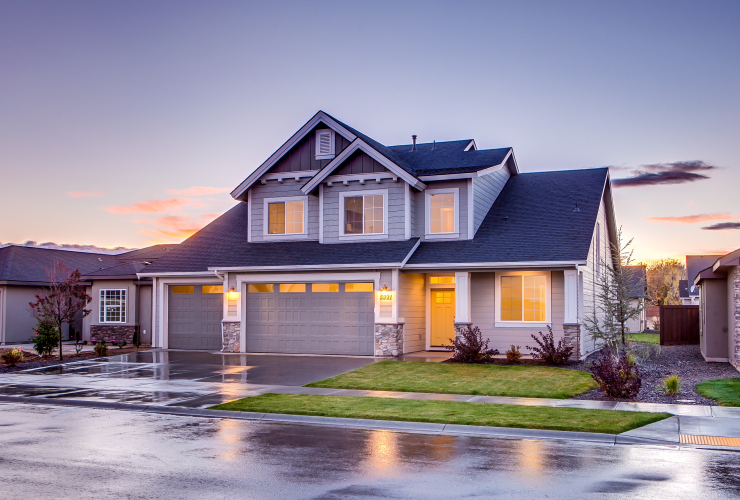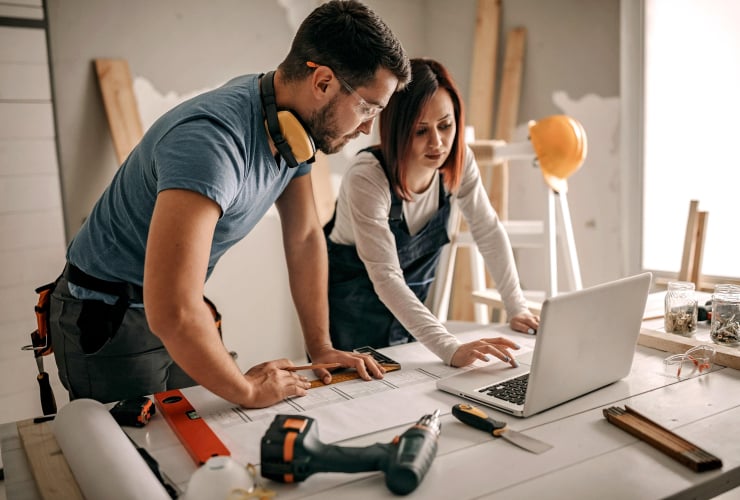There is no pathway to achieving Canada’s greenhouse gas reduction commitments that does not include retrofitting the country’s millions of residential and commercial buildings.
At the current pace, it will take 142 years to retrofit all low-rise residential buildings, and 71 years to retrofit all commercial floor space. And each retrofit must deliver deeper energy savings than standard practice, combined with switching to zero-carbon energy sources. A challenge of this magnitude calls for a national mission to transform our homes and buildings for a post-fossil fuel, climate-friendly future.
Building retrofits are high on the federal government’s priority list. “Cutting energy waste” in buildings is the first chapter of the new climate plan. So far, we see a ramp-up of traditional policies, like grants and loans for individual homeowners. While these policies have their place, they are unlikely to meet climate goals without a strategy to change our current retrofit delivery models and reshape how retrofit markets are organized.
Reshaping retrofit markets
There is reason to believe transformational change is possible. Building retrofits are now constrained by existing policy and market environments. Energy-efficiency programs are evaluated using restrictive and static cost-benefit analyses, focused on short-term results. Under this market structure, supply chains are fragmented and building owners must navigate a confusing array of contractors.
However, this is only one model. We can reshape retrofit markets and policies to meet a net-zero emissions goal. The most prominent example is energiesprong in the Netherlands, which co-ordinates large-scale retrofits of affordable housing to spur supply chain innovations, such as prefabricated walls and all-in-one HVAC systems.
Retrofitting our buildings for climate change must coincide with a strategy to trigger economies of scale and learning. We could see work crews specialized in tasks like air sealing; specialized equipment like small-scale cranes and diggers; better application of technologies like software, drones & 3D printing to the retrofit space; and increased understanding of ways to enhance customer value, guarantee performance, and finance energy savings.
If we can dramatically accelerate retrofits, we will eliminate fossil fuel use in buildings while producing societal benefits, such as improved health, reduced energy poverty, and support for reconciliation with Indigenous peoples through high-quality housing.
Widespread building retrofits can also enable larger economy-wide decarbonization. There is the potential to free up enough electricity to supply 10 million electric vehicles even as we electrify all buildings. This is because building envelope upgrades reduce electric heating demands, and many Canadian buildings use less-efficient electric heating systems that can be replaced by heat pumps.
A mission-oriented approach
A challenge of this magnitude lends itself to a mission-oriented policy approach. This involves establishing a societally relevant goal, asking what resources are required to achieve it, and inviting multiple bottom-up solutions to improve performance.
Canada’s mission can establish an ambitious, but possible in theory, goal of retrofitting all buildings by 2035. Retrofit process performance objectives to achieve this goal should include decreasing retrofit costs by at least 50 per cent, increasing the speed of a retrofit to days instead of weeks, and enhancing value by achieving deep energy savings, improving indoor environmental quality and resilience against climate change impacts.
To organize the mission, we suggest creating a national innovation-oriented organization, as well as on-the-ground market development teams throughout the country. These teams will reshape how existing retrofit markets work by initiating large-scale projects that co-ordinate building owners, supply chains, and local policymakers to meet transformative retrofit goals.
This is a mission that Canada can take on. It involves the creation of new systems for the widespread use of technologies to meet the challenges of our harsh geography, similar to Canadian successes in long-distance transmission and extracting oil from sand.
This approach is also the appropriate response to the climate emergency that the federal government declared two years ago. The response to the pandemic has shown us what an emergency response looks like and what we are capable of when we work together to face down a crisis. A national mission that sets ambitious goals and invites transformative solutions is what we need now to effectively respond to the climate emergency.
Brendan Haley and Ralph Torrie are co-authors of “Canada’s Climate Retrofit Mission: Why the climate emergency demands an innovation-oriented policy for building retrofits,” a report published by Efficiency Canada.
I read the authors' full
I read the authors' full report with great interest, because someone had finally identified some of the key real-world barriers to doing retrofits on a scale big enough to make a difference.
Taking myself as a test case, I think I'm as motivated as anyone would be. I understand why this matters, and the urgency of dramatically scaling up these efforts.
But, so far, my 1970s house is still untouched, with its original windows, insulation, and gas heating. And it's not because I'm hard up for the money. The answer is really pretty mundane.
I haven't done any renovations beyond replacing a roof since buying my house 30 years ago, because I just can't face the thought of dealing with multiple contractors and all of the disruption. My friends' renovation horror stories have scared me off: over-budget costs, contractors who never get work done on time, shortages of materials etc.
I don't need a penny from government to bribe me to do the right thing. I just need someone to spare me from having to figure out everything from scratch and wrangle the people to get the work done properly and on time.
In my community, a big chunk of the housing stock (including my place) was built during a compressed boom period about 50 years ago, so there are hundreds if not thousands of structures with a lot of similarity in floor plans and materials. A program like the one described in this article would work brilliantly here because of the opportunities for standardizing the retrofit treatments.
So I'm waiting ...








Comments